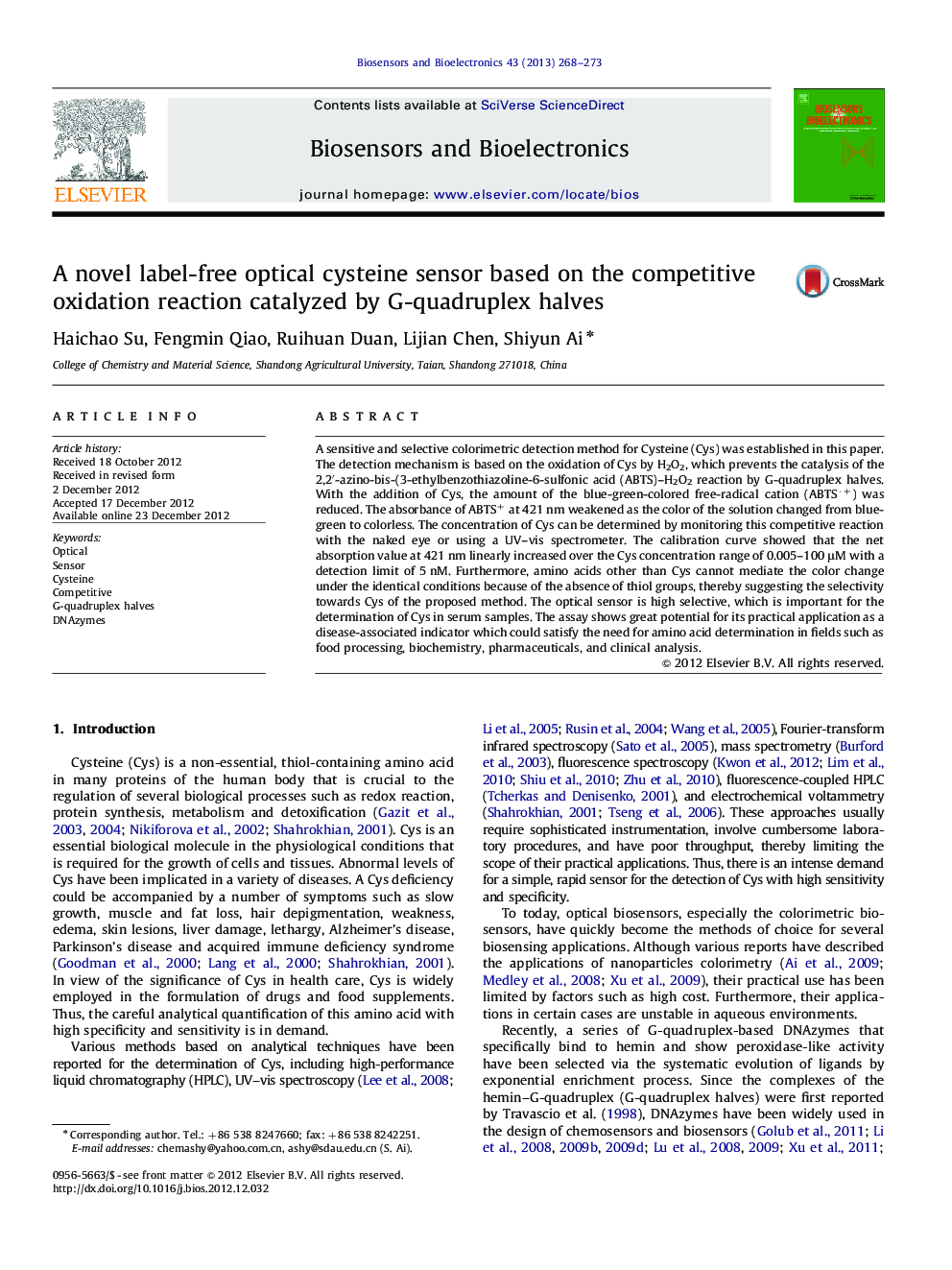| Article ID | Journal | Published Year | Pages | File Type |
|---|---|---|---|---|
| 866855 | Biosensors and Bioelectronics | 2013 | 6 Pages |
A sensitive and selective colorimetric detection method for Cysteine (Cys) was established in this paper. The detection mechanism is based on the oxidation of Cys by H2O2, which prevents the catalysis of the 2,2′-azino-bis-(3-ethylbenzothiazoline-6-sulfonic acid (ABTS)–H2O2 reaction by G-quadruplex halves. With the addition of Cys, the amount of the blue-green-colored free-radical cation (ABTS·+) was reduced. The absorbance of ABTS+ at 421 nm weakened as the color of the solution changed from blue-green to colorless. The concentration of Cys can be determined by monitoring this competitive reaction with the naked eye or using a UV–vis spectrometer. The calibration curve showed that the net absorption value at 421 nm linearly increased over the Cys concentration range of 0.005–100 μM with a detection limit of 5 nM. Furthermore, amino acids other than Cys cannot mediate the color change under the identical conditions because of the absence of thiol groups, thereby suggesting the selectivity towards Cys of the proposed method. The optical sensor is high selective, which is important for the determination of Cys in serum samples. The assay shows great potential for its practical application as a disease-associated indicator which could satisfy the need for amino acid determination in fields such as food processing, biochemistry, pharmaceuticals, and clinical analysis.
► A novel, simple, and highly selective colorimetric assay for detecting Cys was established. ► This method exhibits excellent selectivity for Cys over other amino acids. ► This method has a linear range from 5 nM to 0.1 mM Cys with a LOD as low as 5 nM. ► The primary advantages of this method are its simplicity and rapidness.
